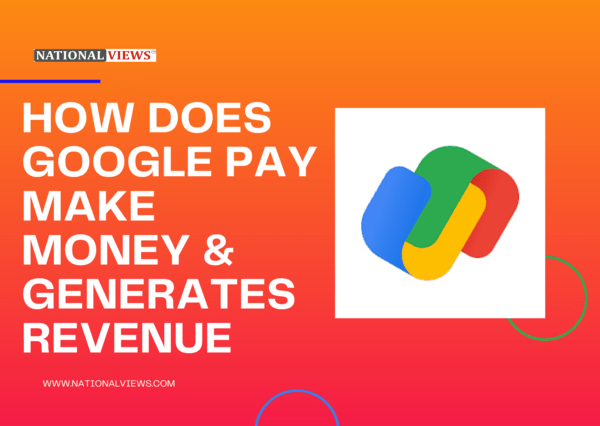Digital Payments have become the preferred method of payment for many people. Since digital & UPI payments become more widely available, bank visits and physical payments have significantly decreased. Google Pay or GPay is a digital wallet platform and online payment system created by Google to power in-app and tap-to-pay mobile device purchases. Google Pay allows users to pay with their Android devices (phones, tablets, or watches).
Online payments, in-app purchases, contactless payments in stores, and even peer-to-peer money transfers can all be made with it. G Pay can do all the legwork for anyone, whether they are shopping for clothes or purchasing groceries online, or buying their morning tea.
G Pay currently generates no revenue for Google (Alphabet Inc). However, Google Pay has several revenue-generating opportunities that can be realized over time. This revenue could come from both transaction fees from banks or merchants and ads and product offers within Google Pay.
So, how does Gpay make money if it does not charge a fee to users or sellers?
The commissions that Google Pay receives for service providers and bill payment transactions are how it generates revenue. The app gets a tiny commission from the business for each transaction a user makes using Google Pay.
Sources of revenue for G Pay include:
1. Mobile Recharges
Mobile recharges are the main source of income for Google Pay. This software receives commissions if a user recharges their SIM card using it.
2. Bill Payments
The app enables users to pay a variety of bills, including those for DTH recharge, insurance, water, electricity, and other services. GPay receives a commission from the provider of the service for each transaction that users make using the app.
3. UPI Transactions
G Pay doesn’t earn anything through this way of transaction but it is able to access user data, which it uses to give services and product recommendations that will perfectly peak users’ interest and improve their engagement with the app, expanding its user base.
The goal is simple – to deploy a broader strategy for all financial services that consumers are in need of, enable more activity, and then attract a larger user base.
The Cashbacks and Rewards given to you by G Pay aren’t from them – so where does it come from?
Well, it comes to you from its parent company, Google Asia Pacific. So, Google reimburses its subsidiary Google Pay for all these rewards that you get in exchange for your user data and so it generates revenue from its parent company as well.
Google Pay Business Model – G Pay Facts
Even while the idea of UPI payments was already there in India, it was Google Pay’s software that turned it into a popular business model. The Google-managed UPI platform is estimated to have 75 million transactional users in India as of May 2020.
The CEO of Alphabet and Google, Sundar Pichai, has acknowledged the popularity of Google Pay in India and plans to expand its use globally.
Google Pay puts a lot of effort towards partnerships, localization, and an ecosystem strategy to innovate and build together. To that end, it has formed strong ties with the government and central bank, made its products interactive, and made them available for ecosystem collaboration.
The app has primarily benefited small businesses nationwide that have signed up for Google Pay for Business, which has assisted them with simple, rapid payments.
GPay also assists job seekers by introducing a location on Google Pay to assist people in finding access positions that aren’t always easily discoverable online.
It costs nothing to sign up for G Pay and connect your bank accounts. Payments made through these UPI apps are free. Nearly all e-commerce websites provide the GPay payment option.
It worked with the government to develop the Digital Payment Abhiyan, which will raise awareness of cashless transactions and online financial security throughout the nation.
G Pay introduced the Spot platform in India, giving businesses a way to interact with customers and create experiences within the GPay app. Numerous people use services like UrbanClap, Goibibo, MakeMyTrip, RedBus, and Eat.
In addition to providing free public Wi-Fi to communities in three different locations, the business wants to create a research facility specializing in artificial intelligence applications in industries including healthcare and education.
The article is written by Team member, Chamanpreet Kaur


